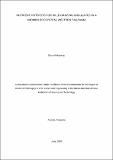| dc.description.abstract | While the movement pattern of grazing ungulates is strongly dependent on forage quality
whose use of nutrient hotspots has rarely been quantified, especially in miombo ecosystems
where soil-nutrient quality is low. Few experiments have been conducted to determine the
role of nutrient hotspots derived soils in improving forage quality in miombo ecosystems.
Nutrient hotspots strongly attract ungulates in nutrient poor habitats such as savanna systems.
However, little is known about their seasonal importance for different grazing ungulate
species. No study has quantified the potential re-distribution of nutrients into the
surroundings away from hotspots. The current study assessed nutrient hotspot (i.e., grazing
lawns and termite mounds) use by ungulates in a highly threatened miombo ecosystem of the
Issa valley, western Tanzania. Study used indirect observation, camera traps and stable
isotope analyses over a one year period to identify seasonal and spatial variations in habitat
use of various wild mammalian grazers around ten termite (Macrotermes sp.) mounds, six
grazing lawns and their respective control sites. Grazer visitation rates were nine and three
times higher on termite mounds and grazing lawns, respectively compared to control sites.
During the rainy season, termite mounds were more frequently used than grazing lawns while
grazing lawns were more frequently used during the dry season. A total of 32 camera stations
recorded 244 wildlife encounter events in total. Camera data show that ungulates used
hotspot areas four times more frequently in comparison to their control plots. Cynodon
dactylon grass planted in soils derived from termite mounds had twice as high nitrogen and
phosphorous contents compared to grasses planted in grazing lawn soils and control site soils.
Stable isotope analysis highlighted that dung deposited by grazers around hotspots originated
from grasses within hotspot areas, hence proving that grazers are responsible for modifying
nutrient stability around these hotspots. This study results highlight that nutrient hotspots play
a significant role in influencing seasonal soil and forage nutrient dynamics, habitat
selectivity, and hence grazing activities/ movements of wild ungulate grazers in miombo
ecosystems. The study concludes that nutrient hotspots are important for various ungulates in
otherwise nutrient – poor miombo systems. | en_US |


